Conspiracy Theory Review-Analysis; Our Hidden Rulers are Phoenician
Last Updated on April 20, 2022 by Hamad Subani

Part Four: Spookdom’s Trail into History
In Part Four, Gerry conducts a detailed analysis of Phoenician Spooks going Global, or rather, expanding from the Levant into all of the Mediterranean and elsewhere. This is clearly what distinguished the Phoenicians from their Spookian predecessors, such as the Babylonians and the Egyptians, who were nowhere near capable of such a feat.
According to mainstream sources, the most important Phoenician cities were Tyre, Sidon, Beirut, Byblos, Arwad in the Levant, and later Carthage in Africa. The rest have been obscured and hidden so that the Global Colonization Project is not given away. Gerry investigates the real scale of Phoenician Colonization by carefully analyzing their trade routes and trade outposts.
Gerry laments at the complexity of his investigation,
Although the Phoenicians invented the alphabet, conveniently no written records remain from their merchant empire, and all Greek & Roman histories about them have been lost or banished. [Although I assume they exist somewhere: the Vatican archives, maybe?] What’s officially left are a few short royal inscriptions and votive steles, which pretty much consist of only names. But as Miles has taught us, we can get very, very far just by comparing the names.
[……]
Many ancient cities said to be founded by Phoenicians are not on any list. Since Europeans had no script in ancient times, and Phoenician records were “lost”, historians start with the Romans, as everything before was local prehistory. Archaeologists do find Phoenician pottery everywhere, but debate whether it was produced locally or merely imported. They only admit Phoenician settlements once they excavate a necropolis.
[……]
For most regions, detecting the trail is more difficult. The kingdoms outside the Fertile Crescent had not yet developed script. That means the silent invasion happened in their prehistoric times.
For Greece, we have the problem that not even the tourist industry wishes to admit Phoenician heritage. Greek’s history is old indeed, and even their derivations of the Phoenician alphabet were developed early, the earliest being Mycean Greek from 1600 BC, from Crete. Naturally, Crete has some half-admitted Phoenician colonies, was an important trade hub, and the earliest records are “mostly lists and inventories”. And “Tyrian” Purple was invented on Crete in 2000 BC, then copied in Tyre. So, the history of Larger Greece already starts with Phoenician influences.
Well isn’t it true that many nations do not have much of a political history, other than the trail left behind by the Spookians? Obviously, wherever the Spookians held power, plebs would not be allowed to influence the political history in any major way. After reading through all of this, you will discover that some nations have NO political history other than Spookian Activity. And for some odd reason the more Spook-compliant their plebs are, the greater their sense of false-pride and culture-worship.
Key Components of Phoenician Colonization
Did you know that the mythical Princess Europa, after which Europe is named, was born in Tyre to the Phoenician King of Tyre? That’s Phoenician punspeak about their founding of modern Europe. According to Gerry, there were three main components of the success of Phoenician Colonization projects.
Island Fortresses
To quote Gerry,
[…..] most Phoenician cities were at their core fortresses built on peninsulas or islands, some even with sweet-water wells bored into the ground, so even if the coastal part of such a stronghold was sacked, the island fortress could withstand almost any siege. If an enemy didn’t come with a better navy than that of the Phoenicians – and we’ll see that such an enemy didn’t exist for a long time – the elites could even continue with their daily trade, or bail out and sail away on their ships. What does this mean in our spook context? The island fortresses were likely not the main protection. Controlling all global branches of power was. The fortresses are still symbolic though. If aristocrats enjoy total impunity from armed conflict, the idea to start wars, and foist them even upon one’s own onshore population just for profit, might occur with greater frequency.

If aristocrats enjoy total impunity from armed conflict, the idea to start wars, and foist them even upon one’s own onshore population just for profit, might occur with greater frequency.
Cities/ports which were founded/conquered by Phoenician colonists were often named after the mother-city the Phoenician colonists who founded them originated from. This is why Tripoli on the Libyan coast is named after Tripoli on the Lebanese coast.
Timber
To quote Gerry

Why did the Phoenicians have the best, even for some time the only navy? Their secret was the wood: The forests of Mount Lebanon provided prime cedar timber. The cedar on the Lebanese flag may look a bit chubby, but that’s only because they didn’t put up a human for size comparison: Cedars were, and are, impressive majestic trees. 5000 years ago, they were already used to buildpalaces & temples. But these straight, tall, hard-wooded trees were also perfect to build formidableseaworthy ships, both warships & merchant ships, the first & best in the Fertile Crescent, and perhaps worldwide.
Purple Dye

To quote Gerry,
The main other highly expensive export good for which Phoenicia officially had a near-monopoly was Tyrian Purple, but it did require production. The purple used to dye the cloth was obtained from the glands of the murex snail, who uses the slime to paralyze its prey. Exposed to sunlight, it turns into various colors, eventually purple & black, and stinks. The factories were often removed a little from the cities. It was likely invented on Crete in 2000 BC, but quickly adopted by the Phoenicians who were trading along the Mediterranean islands. Mounds of crushed murex shells were found near Sidon & Tyre, Sarepta, Carthage, Mogador and everywhere Phoenician.
An anecdote alleges the color would still be vivid after 180 years (though that phrase looks like paid product placement). The price was accordingly high: Diocletian’s financial reform in 301 CE set the upper limit for one pound of purple-dyed silk to 150,000 denarii, roughly 3 times its weight in gold. This factors in the silk, traded from China. Regular purple wool would “only” be 50,000 denarii.
What does this mean in our context? The importance of Tyrian purple might be exaggerated. The merchant princes’ power was that they had a chokehold on all international trade, most importantly metals & ores. Even in the luxury category, purple cloth was likely just the tip of the iceberg. Lots of different luxury goods were traded. All aristocrats from the known world depended on merchant families, not only for their economies, but for their personal lifestyle. I think this was not a marginal aspect, but the top of an exploitation pyramid: Local rulers would milk wealth from their subjects, and merchant overlords would then milk the wealth from local rulers, through silly luxury items.
Interestingly, the name Murex repeatedly appears in the activities of the Rothschild backed Shell Oil Company. To quote,
Armed with the canal companies specifications, Samuel had James Fortescue Flannery designing tankers for Bnito — the Russian oil company of the Rothschilds — and ordered three tankers from William Gray & Company in northern England. Named the Murex, the Conch and the Clam […….] On August 24, 1892, the Murex became the first tanker to pass through the Suez Canal.
To quote a 2018 Press Release,
Earlier this year, we saw the completion of a Teekay LNG newbuilding sister-ship series from the Daewoo yard in Korea of five LNG carriers, all on long-term time-charter to Shell. The sister-ships all have names beginning with “M”: Murex and Macoma (2017); and Myrina, Megara and Magdala (2018). The naming of Murex has an interesting back story: It marked the 125-year anniversary of Shell’s first bulk oil tanker, named after the shell of the Murex sea snail, that first delivered kerosene to Asia.

Incorporation of Local Rulers?
This remains open to question. Gerry suggests it as a possible strategy that contributed to the success of Phoenician Colonization. To quote,
Imagine a clan of local Bronze Age rulers, who successfully traded resources with imperial grand merchants, and are suddenly offered to marry into the global overlord family tree, as a minor branch. They could even keep their country, if only they’d rule it in a joint operation. Would they hesitate for a moment? Sure, foreign merchant corporations would set up camp, and periodically the country would be marked up for some manufactured crisis by the overlord committee. Ultimately, it would be integrated into some empire ruled by 100% Levantine families. But by then the local clan would be on the right side of the Great Hoax, and enjoy the carefree benefit from it all. They’d have gotten their spook education in the imperial capital, and identify as spooks themselves, rather than with their spooked subjects, whom they’d always loathed anyway. Egyptian rulers took offspring of subordinate kings into their capital to educate them. In Part II we’ve also seen many foreign princelings, experts, and even soldiers in the Mesopotamian capitals. Did the Phoenicians in the Levantine middle run the same strategy?
Spain (and Portugal)
Establishment historians often portray the Phoenician colonization of the North African coastline and the establishment of Carthage as their biggest achievement. But what if they established an even bigger presence in Spain? Just look at Gerry’s map. Did you notice how quickly the Phoenicians were able to resume control of Spain (this time as the Reconquista) after brief Muslim rule?
A Greek historian who wrote in 60-30 BC writes about Phoenician “trade” in Spain:
Now the natives were ignorant of the use of the silver, and the Phoenicians, as they pursued their commercial enterprises and learned of what had taken place, purchased the silver in exchange for other wares of little if any worth. And this was the reason why the Phoenicians, as they transported this silver to Greece and Asia and to all other peoples, acquired great wealth. So far indeed did the merchants go in their greed that, in case their boats were fully laden and there still remained a great amount of silver, they would hammer the lead off the anchors and have the silver perform the service of the lead. And the result was that the Phoenicians, as in the course of many years they prospered greatly, thanks to commerce of this kind, sent forth many colonies, some to Sicily and its neighbouring islands, and others to Libya, Sardinia, and Iberia. DIODORUS V:35:4
The Barcids, a Carthaginian dynasty, may have founded Barcelona. Mahon, the capital of Spanish Menorca, was founded by Mago Barca, the brother of Hannibal. Cartagena was also established by the Carthagians.

Cities founded or conquered by Phoenicians around Spain [Map and List By Gerry]: Cagliari, Nora, Chia, Sant’Antioco, Monte Sirai, Tharros, Bosa, Porto Torres, Aléria, Èze, Toulon, Marseille, Narbonne, Empúries, Barcelona, Tarragona, Mahón, Pollença, Sa Caleta, Sagunto, Alicante, Elche, Guardamar del Segura, Peña Negra, Cartagena, Villaricos, Almeria, Adra, Almuñecar, Málaga, Marbella, San Roque, Algeciras, Ceuta, Tétouan, Tangier, Asilah, Larache, Medina-Sidonia, Cádiz, Lebrija, Huelva, Faro, Portimão, Lagos, Sagres, Pessegueiro, Sines, Alcácer do Sal, Setúbal, Lisbon, Estoril,Nazaré, Vigo, Alcabre, Pontevedra, Cambados, Cabo Fisterra, A Coruña, Punta de Estaca de Bares, Valdepeñas
Greece

Places in Greece said to be settled or named by Phoenicians, or named “Phoenicia”, [Map and List by Gerry]: Finike, Rhodos, Halki, Kalymnos, Marathos, Fournoi Korseon, Samos, Erythrae, Tenedos, Troy, Lemnos, Abdera, Thasos, Lake Volvi, Pella; Astypalaia, Anafi, Thera, Ios, Folegandros, Milos, Antiparos, Paros, Delos, Mykonos, Syros, Andros, Thorikos, Salamis, Corinth, Thebes, Chalkis; Kommos, Aradena, Loutro, Kythira, Gytheio, Foinikounta, Ithaca, Paxos, Finiq.

The Colossus of Rhodes before an earthquake brought it down. It represented the Phoenician deity Phoebus/Apollo/Zeus.

Why was a State of USA named after the Phoenician Rhode Island?
The Samson Riddle of the Bible, ages before the Bible!
It seems that this riddle was in vogue among the Phoenicians, and their later Greek successors, several centuries before the Bible was composed, and long before Jesus was born!
Gerry has to be quoted in his entirety here because he has made an amazing discovery. Remember the Samson Riddle of the Bible in Part One? It seems that this riddle was in vogue among the Phoenicians, and their later Greek successors, several centuries before the Bible was composed, and long before Jesus was born! To quote Gerry,
Of the few things that remain from Ancient Phoenician culture, one “deity” is a particularly strong clue that their elites were also cryptocrats: Melqart. That name is not a god, but again just a silly pun: It means “cryptocrat”, and is linked to Greek Heracles. I’ll show you why. For some reason, Phoenician elites particularly loved the Greek “Heracles” theme. And Heracles [Also known as Hercules] appears in places where you’d rather expect Phoenician colonialists […..].
But wasn’t Heracles Greek? Apparently he was also a Phoenician symbol, named “Melqart”: Heracles is unanimously equated to the Phoenician god Melqart . He’s even called HerculesMelqart, as if it was one deity. Herodot claims to have confirmed this by a visit to the Phoenician temples. And he bilingual Cippi of Melqart, dated 200 BC, directly translates the Phoenician god Melqart in Greek as Heracles (MLQRT, and ΗΡΑΚΛΕΙΑ). […..]
While there aren’t any Phoenician depictions or tales of Melqart left, I could find quite a number of statues from Cyprus, very close to Phoenicia, influenced by Phoenician culture and listed with Phoenician colonies. These statues are alternately called Heracles & Melqart, as Cyprus was between Greece & Phoenicia. There are good images here, here, here, here, here, here. There’s even two on Wikipedia. It’s great artwork! But why would that skinny guy with the sly smile be Heracles, or Melqart? He looks nothing like the brutish barbarian, or like a King of the City. But the clue here is the lion: The cap of lion hide over his head, the lion paws knotted on his breast, and sometimes a lion cub in his hand (which you also see in Khorsabad). That’s all we need to know: The lion is a Phoenician pun, and we already know this pun: It’s Samson’s pun!
We can easily solve this one, because we have already solved it, in Part I. Remember: lion-bee = KPR-DBR = cover-command = hidden-ruler. But we don’t find these word roots in Heracles or Melqart. What happened?
For Heracles, the pun got simply translated into Greek: The name “Heracles” is usually explained as Hera-kleos ( Ἥρα-κλέος), “Hera’s glory”. But I have a much better explanation in our context: Hera–kouleos (Ἥρα-κουλεός), a “covered-demigod”. Aa a heros was not a hero in the modern sense, but a human demigod worshiped in Ancient Greece, we have our “hidden lord” once again.
For Melqart, the pun got translated as well, but into Phoenician synonyms. Wikipedia gives Melqart’s Phoenician spelling as MLK-QRT, to explain the “King of the City”. But that is wrong. He was never spelled with K, or at least I have never seen it like that. The correct spelling is MLQRT (מלקרת), you can check it on the Cippi of Melqart. Now what does that mean? QRT means “city”, they’re right about that. But it’s mostly a small city, or a village . What’s another Semitic root for village? It’s KPR, which also means cover. You can probably see where this is going. We have found our “cover” already. Now where’s the second part of our lion-bee pun?
Melqart’s prefix is ML. We find that word in Hebrew as MLH, but the H is later vowelization. The Phoenicians would have written it ML. What does ML mean? What does it mean as Hebrew MLH? It means word. Another word for word is DBR. Which also means ruler. It’s the same old pun again: ML-QRT = word-village = DBR-KPR = cover-command = “hidden ruler”.
The spooks recycled the same lame old puns across nations & centuries: Samson’s pun is Melqart’s pun is Heracles’ pun! The hidden rulers spooked Ancient Phoenicia as Melqart, and Ancient Greece as Heracles. We have 2 deities whose names mean “cryptocrat”. We’ll see later how popular this pun was when we analyze antique coins with aristocrats posing with a lion skin.

Macedonia
Before we begin, notice that the name is obviously derived from Sidonia. Alexander the Great is relevant because he fake-destroyed Phoenician Tyre, the most important city of Phoenicia. As we shall see later, he became the hidden bee-king of the carcass of the Persian Empire.
I don’t know what QRN means for Macedonia, but for some reason Alexander the Great issued a lot of coins depicting himself with horns.
I think I know why. He was spoofing/parodying genuine conqueror Cyrus II, who also wore two horns. But Miles disagrees.
One important Greek-Phoenician city was Thessaloniki. In a book on the modern World Wars, I had pinpointed it as the main location where the conspirators associated with the Young Turk Movement originated from (including Mustafa Kemal). Prior to that, this was also the location where the famed Janissaries were massacred, after the Ottoman royal bloodline had been appropriated.



For some reason, the syllable Eu can be extensively found in Phoenician names and locations.
Alexander the Great will be covered in greater detail by Miles Mathis in Part Six.

Italy
The Phoenicians Founded the Roman Empire!
I will have to quote Gerry in his entirety, as this will definitely change your perspective on history.
Southern Italy was officially settled by Greek migrants & merchants at the latest by 800 BC. This coincides with the founding of the Northern Italian short-lived Roman Kingdom in 753 BC. Greek legend has it founded by Greek refugees, in the Aeneid, which has a Phoenician flavor to it: It tells how the mythical Trojan prince Aeneas first sails towards Phoenician-colonized Sicily, then ends up on the North African coast, where he enters Phoenician Carthage, just founded by the Phoenician princess Dido from Phoenician Tyre. The gods make them fall into an unhappy love, and destine their future empires, Rome and Phoenician Carthage, to be eternal enemies.
The Coat of Arms of Scania, the southernmost province of Sweden features a Phoenix wearing a crown. A truck manufacturer located there is also called Scania and has a similar symbol.
Here we encounter name similarities again: Aeneas’ son Ascanius would in vowel-less Semitic script be spelled like Ashkenaz, mythical progenitor of the Ashkenazi Jews, who are believed to have migrated into Europe via Italy. The name later surfaced in Germany as the aristocratic Ascanians. Through both father & mother, Greek Ascanius was related to king Priam of Troy, who had a son also named Ascanius . The site of historic Troy controls the bottleneck entry into the Dardanelles. A Lake Ascania lies on the far side of the Sea of Marmara, close to Byzantium. That region was home to a Phrygian prince again named Ascanius who fought for the Trojans. Phrygia was formerly the Hittite Empire, wealthy because of advanced iron production. The Hittite Empire was destroyed in the Bronze Age Collapse by the Sea Peoples, and by classical Greek accounts settled by migrants, who according to the Midas myth became very rich immediately. They also used the Phoenician alphabet.
All these Ashken-X names might be connected to Levantine Ashkelon, which in Egyptian letters was written Asqanu. Its earliest known ruler was Yidya, which sounds a little like a people linked to the name Ashkenaz. The city is “Philistine”, but the Philistines were likely a Sea People migrated there, and trade routes were continuous along the Levant. Asqanu was producing glass, and nearby Ashdod purple garments, both Phoenician trademark products.
Ascanius is also called Iulus, like the Roman gens, family, dynasty & emperor. Where that name appears in Neo-Punic inscriptions, it is written as YWLY and YALY (יאלי ,יולי). That is very close to the Hebrew name YWAL (יואל), translated as Joel. A BDB entry links it to a Phoenician “deity”.
“Joel” is attested for Phoenician inscriptions outside Carthage, together with other YL-variants.
Troy itself is also named Ilios or Ilion, in the Iliad. There was a Carthaginian colony called Iol (now Cherchell[1]As in Winston Churchill?). Near Rome, the word root appears with the Aeolian Islands next to Phoenician-settled Sicily. The Wiki authors avoid the word “Phoenician”, but mention commerce “which extended from Mycenae to the British Isles”. That describes only the Phoenicians! They also mention Phoenician shipping and that the Aeolians later fought on the side of Carthage.
The mythical Ascanius-Julius settlers founded a historical Roman Kingdom where among the royal insignia, “the most important was the purple toga”, tying the Roman kings to Phoenician producers.
(Interestingly, there’s a British author named William BEEston, like other exalted people of the old spook nest Boston. He admits that Aeneas spoke Phoenician, identical to Hebrew, but then explains all Roman names as coming from harmless Hebrew words, and accepts Rome’s founders as genuine refugees. I don’t. I think they were merchant princes founding a colony!)
[…..]
The Brutus clan is found among Rome’s founders and Caesar’s alleged assassins. Their name is similar to Phoenician Beirut, which became “the center of Roman presence in the eastern Mediterranean” and “the most Roman city in the eastern provinces”. The root BRT also appears in the South Italian region Bruttia, and some inscriptions listed Beirut as BRTYA (ברתיא). Later, the name Brutus of Troy was given as the mythical founder of Britain, similar to Aeneas in the Aeneid.
What’s odd here is Semitic people founding a European empire on deliberately pagan, rather than Jewish lines, and later opposing the Biblical Jesus Christ in every possible way.
MAJOR UPDATE: On 1st October 2021, Miles Mathis released a new paper on the origins of the Roman Empire, in which he posited a theory that Ascanius was actually the son of Dido, the Queen of Phoenician Carthage! To quote,
Livy tells a different story than Vergil, which is that Ascanius didn’t appear until later, and he suggests Ascanius’ mother was a native of Italy named Lavinia. So in some stories Ascanius didn’t appear until after Carthage, which is suggestive. Because, remember, it is admitted that Aeneas had a lover after Cleusa and before Lavinina: Dido, queen of Carthage, who was a Phoenician. So why did no one ever float the idea that Ascanius was the son of Dido? That would seem to be a natural suggestion, but— very conspicuously—no one has ever suggested it. Everything is suggested, except that. It is very obviously buried, which is clue by itself. But why would Vergil and Livy both go out of their way to bury it? Because if Dido was the mother of Ascanius, then, by the matrilineal rules of the Phoenicians and Jews, the top Roman lines were Phoenician. You will say that I have previously shown the Trojans were also Phoenicians, but that isn’t admitted by the mainstream. However, the mainstream admits the Carthaginians were Phoenicians, so it has to keep your eyes off the idea of Dido as mother of Ascanius. One could argue—and I am arguing—that hiding this idea is actually Vergil’s primary motive in publishing The Aeneid.
The Punic Wars were probably just a pun
According to establishment historians, Hannibal the Carthagian set out to conquer the Romans, with his elephants in tow (in ships), but Roman trumpets made the elephants turn around and rampage his army, turning the battle into a rout.
With both Rome and Carthage being Phoenician, why was this fake war conjured? Gerry has come up with several convincing explanations. Was it to trick the panicky subjects of the Roman Empire into financing superweapons, such as the Corvus, which probably never existed? To quote Gerry,
Get that! Perhaps it never existed! Care to guess how much taxpayer money was spent on these superweapons that never existed? And ships that never existed? And an arms race that never existed? And battles that never existed? And a crossing of the Alps that never existed? Does it remind you of something? Like a modern-day Cold War that never existed? And a War on Terror that never existed? And incredibly expensive, yet unguarded, nuclear superweapons that never existed? Already by the time of the Punic Wars mankind was way up Hoax Creek without a paddle.
Already by the time of the Punic Wars mankind was way up Hoax Creek without a paddle.
Both Roman and Carthagian plebs were tricked into selling their lands and their estates at fire sale prices once the enemy was at the gates. While Hannibal never attacked Rome, the Romans went out to destroy Carthage in 146 BC. Or was it destroyed? 24 years later this happens:
By 122 BC, Gaius Gracchus founded a short-lived colony, called Colonia Iunonia, after the Latin name for the Punic goddess Tanit, Iuno Caelestis. The purpose was to obtain arable lands for impoverished farmers.
A few more decades later, Carthage was rebuilt by none other than Julius Caesar, and would emerge as the most important Roman city in Africa.
Maybe the Phoenicians saw better opportunity in now identifying as a Western European Empire, and so maybe this was a deliberate attempt to bury their Semitic origins. Maybe people were getting suspicious about their new self-appointed “Roman Kings.” To this day, all school textbooks echo the canard that Carthage was destroyed and the Phoenicians never rose again. Maybe this fake war was intended to supplement this very message.
Phoenician Emperors of Rome
Three centuries after Carthage was fake-destroyed, Rome had an emperor Septimius Severus, founder of the Severan dynasty. He was from the Libyan Coast, which was ruled by Carthage! His first wife appears to be Carthagian as well.


The Libyan capital of Tripoli was founded by Phoenicians. Did you know that there is another Tripoli in Lebanon and another in Greece? Look at their current city seal. Also, the name Libya may be derived from Liban, or Lebanon!
The Phoenician founder and First Queen of Carthage was called Dido. There were seven Phoenician British Navy ships named after her.

Diana Mary “Dido” Harding, Baroness Harding of Winscombe is the chairwoman of NHS Improvement since 2017, and head of the NHS Test and Trace programme and acting chair of the National Institute for Health Protection since 2020.
Following the death of Jesus Christ, Carthage was chosen as the location for holding Councils that distorted and tampered with his message and his teachings? Carthage was lost to the Muslims in 695. But the Romans sent an expeditionary force in 698 to get it back. They permanently retreated after sustaining heavy losses. In 1881, France snatched up a region (which includes the ruins of Carthage) and created a separate Protectorate, which would become the basis of the tiny present day nation of Tunisia. In World War II, Nazi Germany would be allowed to occupy Tunisia. It seems some of its openly Jewish residents had to be goaded into the Zionist project. This region would be a famous “theatre” of the war, despite the fact that the Germans were at great risk of having their supply lines stretched across the Mediterranean. It seems that there was an attempt to have local Islamic powers ally with Germany. Had they made that mistake, the entire Middle East would be subject to permanent Allied Occupation.


Kais Saied is the current Spook-President of Tunisia since October 2019. Does he look Arab to you? Tunisa rhymes with Phoenica.

Is Tunisia currently a Spook Central? It sure is. It is most infamous for rules and laws which target Islamic practices. All its political rulers, past and present, are Spooks. The 2011 Arab Spring originated from there.
Roman emperor Septimius Severus had a second wife who came from the Syrian Emesan/Sempsigerami Dynasty, which ruled a small area out of present day Homs (46 BC – 79 AD). Gerry has translated Sempsigerami as soothsaying, another Spookian art. An important member of this dynasty had a tomb built like an Egyptian pyramid in Homs. It was dynamited by Ottoman authorities to hide the similarity. Trade routes from Emesa lead to both Byblos and Palmyra. A Severan Emperor of Rome was even named “Lord Byblos.” To quote Gerry,

A Sempsigerami tomb in present-day Syria, before it was blown up.
A Severan emperor of Rome was named “Lord Byblos” and had a god of the same name worshiped in his hometown. Phoenician Byblos was called Gabal in Phoenician. A lord or god of that city would be El-Gabal. That was the name of Severus’ grand-nephew, Roman emperor Elagabalus. It’s explained away as a “Syrian” sun god worshiped by the Sempsigerami, asa black meteorite, Latinized to Heliogabalus. A votive inscription to the “Lord of Byblos” was even found in the Netherlands as HELAGABALO, close to a Roman castle. This “sun” god’s name is explained as meaning “God ofthe Mountain” in Aramaic. That meaning exists in Ugarit and Arabic. But GBL in Phoenician, Aramaic & Hebrew means bordered, sometimes by mountains. Most importantly, GBL is the written Phoenician name of the ancient merchant city Byblos, vowelized as Gabal, Gebal, Gubla. At least 2 smaller cities nearby bear the same name: ancient Gabala, and not-so-ancient Gabula, founded it Roman times. It may be that a top-level family from Byblos-Gabal used their clout to extend their personal little empire.

Britain
Britain may appear far off Phoenician trading routes, but catapulted to importance among the Phoenicians after it became the main source of a metal used in the Bronze Age. To quote Gerry,
Miles mentioned the book “When Scotland was Jewish”, and quoted it saying that some British high houses were always Jewish . But the book doesn’t offer much explanation of why Scotland was Jewish, and how British aristocrats could always have been Jewish. The snippet they give is this :
There were rich tin mines in this region that were exploited by the early Phoenicians (800 B.C.E)… Because the Judeans (Jews) often worked with the Phoenicians as trading partners, some could have reached Britain as early as this time.
After all I’ve shown you, would you say “Phoenician” & “Jewish” elites were trading partners? Or rather that they were one and the same? But otherwise they’re right. The link between Ancient Britain and the merchant princes of the Ancient Levant, is summed up in a single word: tin. In the Bronze Age, economies started to rely increasingly on: bronze. It was harder and more durable, yet easier to cast than copper. But unlike copper or iron, Bronze is not a metal but an alloy of copper and, most often, tin. While copper resources in the earth’s crust are vast with about 70 ppm, tin is very rare with about 2 ppm. These few tin sources are widely scattered, and didn’t coincide with centers of ancient civilization. Since most alloys need 10-20% tin, it had to be traded from far away to turn available copper into bronze. When discussing the power of traders, the Bronze Age could be called the Tin Trade Age. One central source for tin was… Britain!!!
To further quote Gerry,
Remember my map of Spain, the coastline covered with Phoenician tradeposts? The Phoenicians went further, but the records got “lost”: Carthaginian Himilcois the first publicly known Mediterranean explorer to reach Northern Europe by sea, officially in 480 BC. That is also hard to believe: Cadiz was founded by Phoenicians precisely in 1104 BC, according to Greek & Romanhistorians. Lagos is thought to have been settled by Phoenicians in 900 BC, Lisbon by 800 BC. Even if these late datings are correct, did it really take greedy merchants 500 years to get around Spain to Brittany & Britain, the source of the valuable tin they traded? And would they fortify the Gibraltar with strongholds like Cadiz, Carteia, Abyla, Lixus if no trade would be coming from the Atlantic? Himilco’s report, and secondary Greek & Latin sources were perhaps “lost” for a reason: Hanno the Navigator, who sailed along Africa until Gabon in the 5th or 6th century BC, is said to have embarked with 60 ships & 30,000 colonists! That sounds exaggerated, but would still mean “a lot”. If Himilco’s expedition was anything like Hanno’s, it would be a major colonization enterprise, not cautious “exploration”. Another account states that Egyptian pharaoh Necho II around 600 BC commissioned a Phoenician expedition that sailed for 3 years, around the African continent back toEgypt. I’d say that they hadn’t been afraid of the Atlantic for quite a while, and could easily bridge the gap from Portugal to Brittany, to pocket the full arbitrage of the tin trade.
Gerry speculates that the name Britain itself may be derived from Beirut. And maybe a conflation of tin. In Britain, there is a Tyrie (Tyre), a Tarves (Tarshish), a Saint Nazaire (Nazir), Cornwall (Semitic QRN), a river Camel (Semitic GML), a Truro (Tyre), a river Tamar, a river Plym (Palm), a hamlet St. Pinnock (Phoenix), a river Hamose (Egyptian Ahmose), Menheniot (Hebrew: “from ships”). There is also a modern day Cornish Phoenix Mine! Later Miles suggests that the House of Hanover, which ruled Britain and Ireland may be derived from Hanno.
Britain would be converted into a Launchpad for Phoenician Global Colonization, creating the largest Global Empire in Human History, and like the Phoenicians, this Empire too, was characterized as being a Maritime Empire. Once Phoenicians established themselves elsewhere under the guise of British colonialism, the Empire was quietly wrapped up overnight, to the puzzlement of British plebs. Around this time, Britain became the staging ground for the Two World Wars (notice that only Britain was never invaded) which saw the creation and unprecedented expansion of a new Phoenician project, the Soviet Union. Today, Britain still plays the role of Spook Central for many Phoenician projects. The only reason Britain seems to be spared from the cycles of destruction is because the Spooks need a stable place to operate from.
Germany
Gerry does not go into extensive details, but it seems Germania may have been colonised completely long before the Romans.
For example, Gerry has dug up a “Germanic Vandal King” colonizing Carthage in 439 (Imagine the logistics of moving all the way from Germany to North Africa). In Carthage, this “Vandal King” ironically set up institutions of learning, science etc. To further quote Gerry,
Besides their innovative writing, the Vandals also looted the area and sacked Rome, where they took spoils from Jerusalem. The Roman empress herself had “summoned the Vandal Gaiseric”. It fits the picture that herdaughter then married Genseric’s sonand moved to Carthage, then to Jerusalem. It also fits that the “surviving senators, accompanied by their wives”, also moved to Carthage. I think we got a hoaxed Barbarian scare again. The sister-in-law of the empress had“summoned” Attila the Hunin a similar fashion.
As Genseric is also called Geiseric, his name might be connected to Levantine Gezer, which guards the passage from Ashdod & Jaffa towards Jerusalem. I’d guess the “Vandal” aristocrats were rooted in the region, and returned when called on to mop up and reshuffle Rome & Carthage once again.
Recent research shows that the Roman-Phoenicians consolidated Germany after extensive bloodbaths. To quote,
In Julius Caesar’s personal account of the Gallic Wars, De Bello Gallico, the Roman commander (and emperor-to-be) detailed the massacre of two Germanic tribes by Roman troops in 55 BCE. The tribes had asked Caesar for asylum. Instead, they were massacred. Caesar boasted that his troops killed 430,000 people, the majority of them women and children. Some died by sword or spear either in battle or while fleeing the Romans. Others attempting escape drowned in a nearby river.
The location of this horrific episode has never been confirmed. But now, archaeologists with VU University Amsterdam say they’ve found the first physical evidence that the battle took place in what is now the Netherlands, near the city of Kessel.
Conclusion
To quote Gerry,
First, we found that spook aristocrats were never attached to any tiny nation, but were always globalized, playing countries against each other for profit. Many came from the Fertile Crescent, but had that region razed many times over nonetheless. They hopped to and fro over the planet, always shifting, reshuffling and breaking their empires.
Second, we saw that the important conquests are not in our history books as such. Rather, Europe was colonized in the Bronze Age already, in patterns that match up with structures we see in today’s spook aristocracy. The entire upper class of colonized regions was replaced, with common people unaware of it, to this day. Some of this colonization is cautiously admitted, just not emphasized.
Third, we saw that the spooks always held power. The secret behind their power is simply that there is no big secret. They don’t know anything special. They can’t do anything special. They never achieved anything special—other than monopolizing trade. With the power to deceive, even idiots can rule the world for millennia.
Fourth, we confirmed again that all layers of their lies contain grains of truth. Even for ancient times, we can solve many a mystery of history with a stroll on Wikipedia. I hope I also showed that digging into contemporary texts can sometimes give you extra clues, if only for the punny language.
Europe was colonized in the Bronze Age already, in patterns that match up with structures we see in today’s spook aristocracy.
| ↑1 | As in Winston Churchill? |
|---|





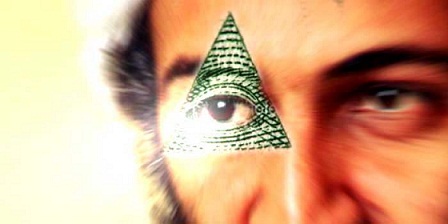
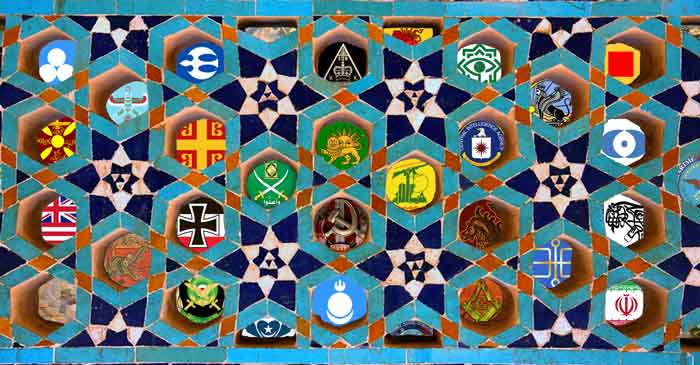
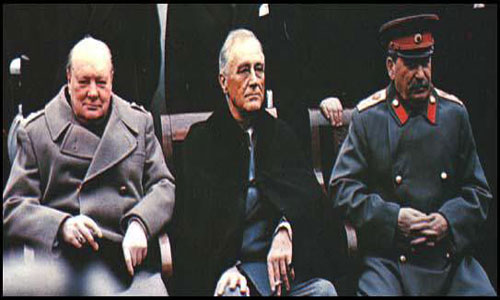

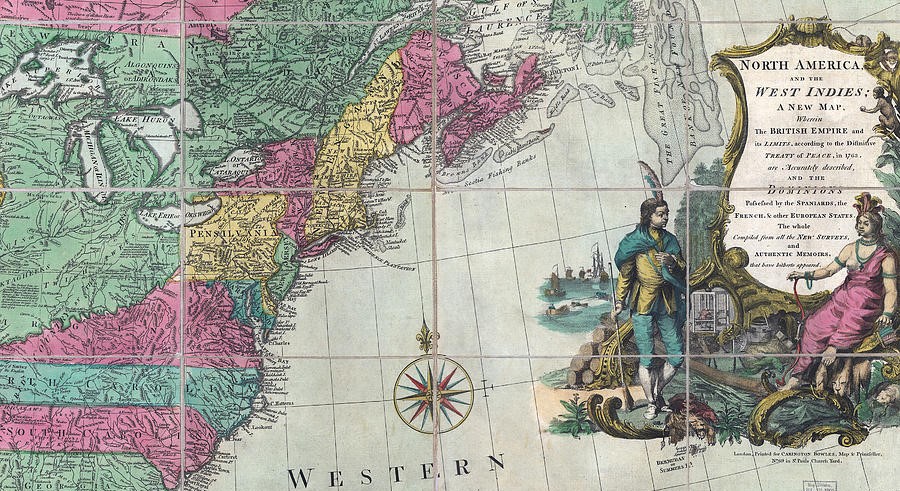
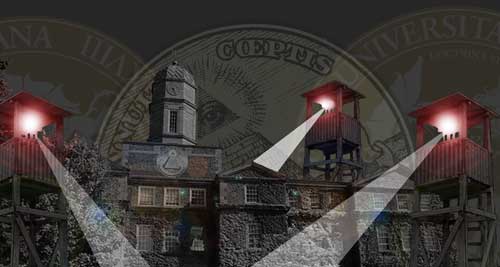
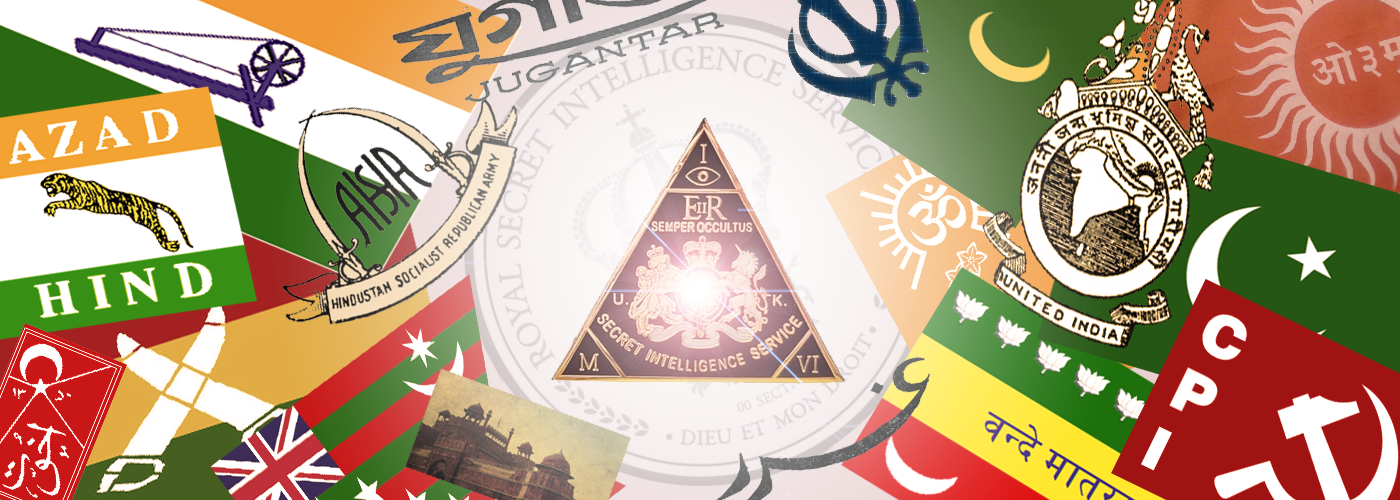




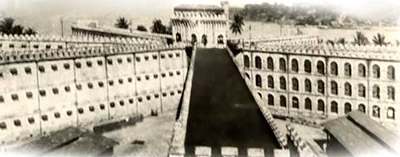


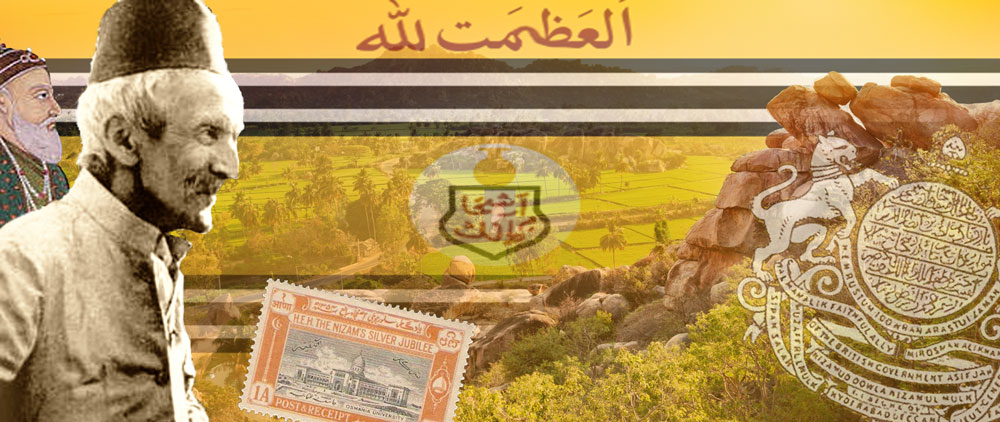









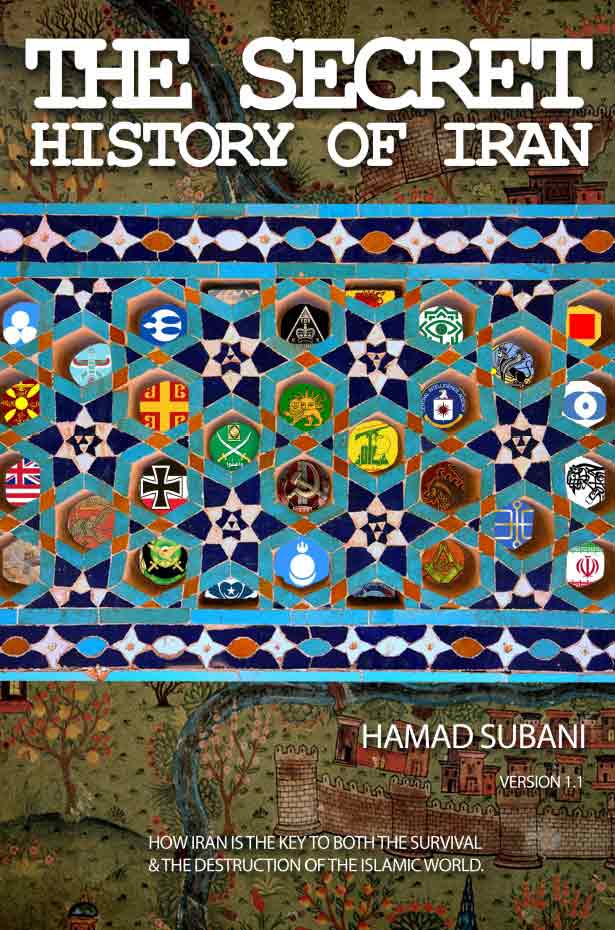
Interesting, all of this corroborates my own research and conclusions. This is my website: Esoteric Awakening. Stop by anytime if you like and feel free to use any of my work however you want, it may offer you more insights to use for your own work. I will read more of your work soon and will likely ask to republish a piece or two at my website at some point if you are interested, to introduce my readers to your work and website. Cheers mate
https://esotericawakening.com/
Just to mention the vandals/ gaiseric were in 400s AD, as part of the decline of the Roman Empire, not before. Keep up the good work.
Thanks. Gerry is aware of that. Yet he brings it up to highlight their strange affinity to Carthage.
[Samson…”when she discovers her[sic: his] motives.”
Corrected. Thanks.
And fake snow in texas :
https://youtu.be/T61lre0wYVc
lot of things happening in space too which NASA is hiding :
https://youtube.com/c/GinaMariaColvinHill555
Phoenician Navy = Tribe of Dan
Almost. Tribe of Dan blew outa dere per Stephen Pidgeon after embracing the “Sons of Belial” perversion that got the Tribe of Benjamin slaughtered as blamed for their raping to death a Levite’s wife/concubine. Dan is cut out of the list of tribes in Revelation/Apocalypse, true, but Dan buddied up to the Amorites, Satanista Semites who reverse everything God is and wishes, so very heavy into Genesis 3:15 Woman & Seed persecuting as the foes of Satan, so anti-marriage, pro-gay, pro-slavery, promoting “gods made people as slaves” creation story everything opposite, Allah is crazy vicious slaver god everything opposite. Dan PLUS Amorite imposters pretending to be Neo-Sumerians, Neo-Assyrians, Neo-Babylonians, Neo-Cons! Rinse and repeat. DAN PLUS AMORITES ERASED JEWS AND NEW JEWS, CATHOLIC CHRISTIANS bringing divorce, usury, perpetual debt with “Protestant Reformation.” GREAT DECEPTION punked by Woman of Rev 12 at Fatima, Portugal, 1917 “Miracle of the Sun” with SIster Lucia replaced by Lucy2 sisterlucytruth.org